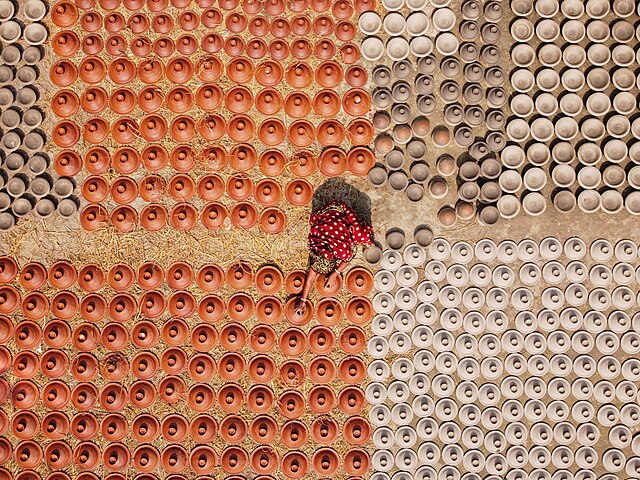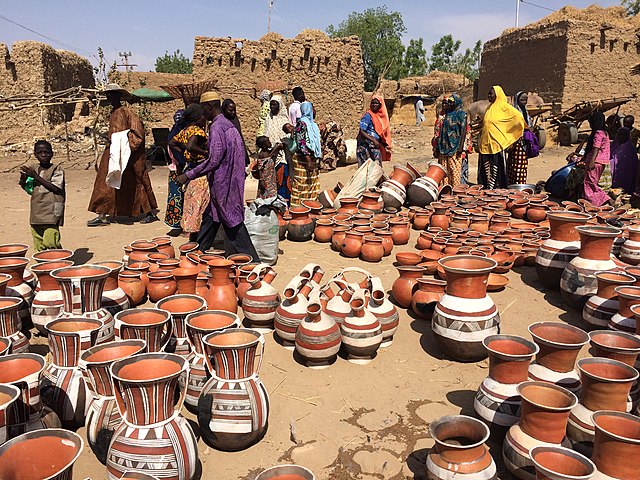Bone china is a type of vitreous, translucent pottery, the raw materials for which include bone ash, feldspathic material and kaolin. It has been defined as "ware with a translucent body". Different countries have set different standards for calling a product "bone china", based on the minimum percentage of phosphate derived from calcined animal bone or calcium phosphate that is required. This may range from 25% (USA), to 30% (UK), to 36% (China). Bone china is amongst the strongest of whiteware ceramics, and is known for its high levels of whiteness and translucency. Its high strength allows it to be produced in thinner cross-sections than other types of whiteware. Like stoneware, it is vitrified, but is translucent due to differing mineral properties.
Staffordshire bone china covered chocolate cabinet cup, with enamels and gilding, c. 1815–20, Victoria and Albert Museum
Plate from Ronald Reagan's state service for the White House, by Lenox
Pottery is the process and the products of forming vessels and other objects with clay and other raw materials, which are fired at high temperatures to give them a hard and durable form. The place where such wares are made by a potter is also called a pottery. The definition of pottery, used by the ASTM International, is "all fired ceramic wares that contain clay when formed, except technical, structural, and refractory products". End applications include tableware, decorative ware, sanitary ware, and in technology and industry such as electrical insulators and laboratory ware. In art history and archaeology, especially of ancient and prehistoric periods, pottery often means vessels only, and sculpted figurines of the same material are called terracottas.
Hand building a jar.
Finished pottery products kept for drying in the sun.
An 18th-century Chinese export porcelain service, for the America market
The pottery market in Boubon, Niger.






